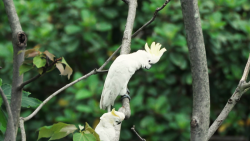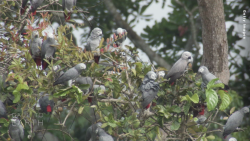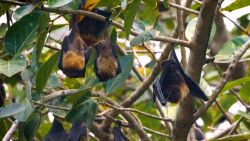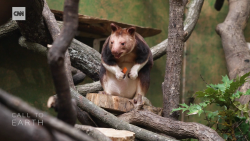Editor’s Note: Call to Earth is a CNN initiative in partnership with Rolex. Olivier Nsengimana is Rolex Awards Laureate.
In Rwanda’s lush green grasslands, romance isn’t dead, but it’s had a brush with extinction in recent years. The country’s gray crowned cranes – birds which dance for each other, often pair for life and share chick-raising duties – fell victim to their own popularity.
Captured as chicks and kept as status symbol pets in the gardens of hotels and private homes, the birds were almost wiped out. Destruction of their habitat for agriculture added to the pressure and by 2012, only around 300 remained in the wild.
Gray crowned cranes dance together as part of their mating ritual and often mate for life.
But the species has undergone a remarkable recovery in Rwanda thanks to local vet and conservationist Olivier Nsengimana. Living in Rwanda’s capital, Kigali, Nsengimana had found it strange to hear cranes calling from people’s gardens, while wild habitats were almost devoid of the birds. “I told myself someone has got to do something about it,” he says. “Someone has got to make a change.”
Gray crowned cranes are still at risk in other parts of Africa. Nsengimana says there’s no “copy and paste” solution for all countries, but lessons can be learned from Rwanda’s success.
An amnesty
The majestic cranes are seen as “a symbol of wealth and longevity” in Rwanda, says Nsengimana. “People love them so much, but (the) lack of awareness is like too much love … it created a threat.” Taking cranes from the wild is illegal in Rwanda but many pet owners weren’t aware they were breaking the law.
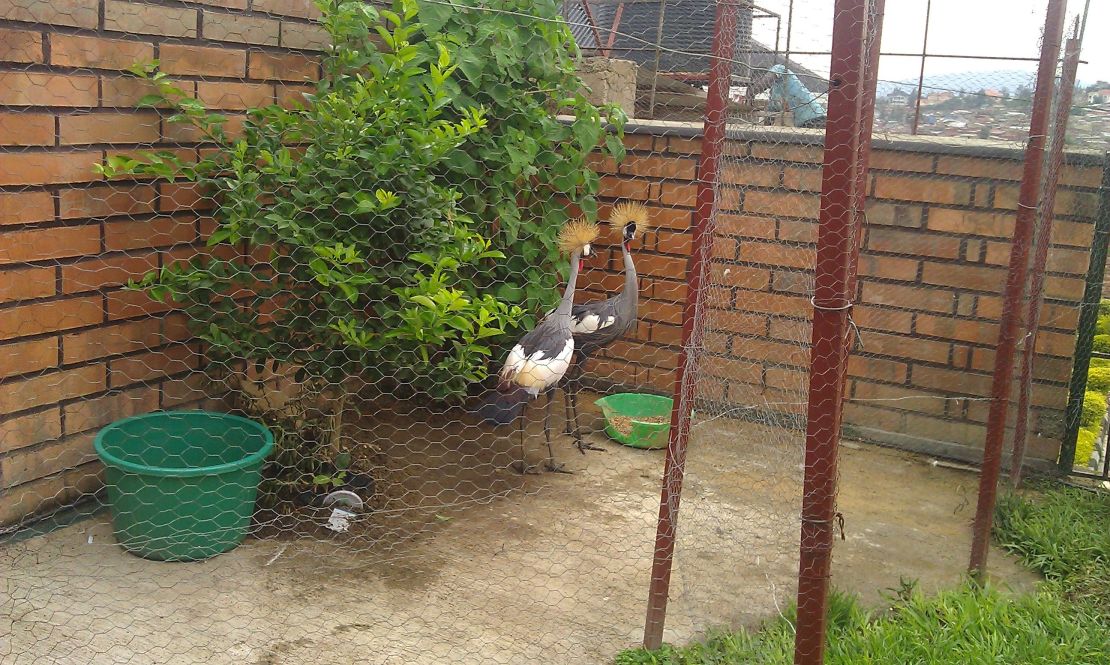
In 2014, Nsengimana worked with the Rwandan government to launch an amnesty program encouraging owners to surrender their pets, without fear of prosecution. He broadcast his message on national radio, asking pet owners to call him on his personal phone number. “I said, I know you also love them, we all love them, but if we keep them in our gardens … we are going to lose them.”
Crane owners across the country responded.
Since 2014, 242 gray crowned cranes have been successfully rescued from captivity, says Nsengimana.
Healthy birds were released to a rehabilitation site in Akagera National Park, near Rwanda’s border with Tanzania, where they relearned how to forage in the wild.
However, many pet cranes previously had their feathers clipped or wings broken to prevent them from escaping. Birds that cannot survive in the wild are kept at Umusambi Village – a crane sanctuary in Kigali run by Nsengimana’s organization, the Rwandan Wildlife Conservation Association (RWCA).
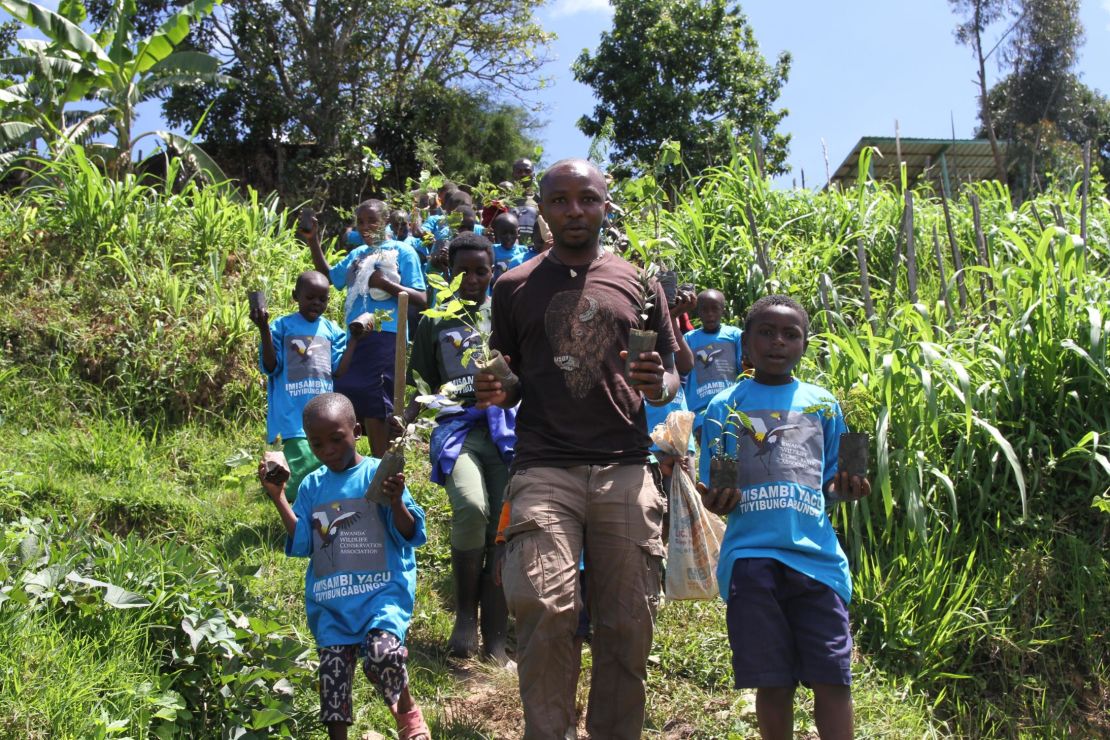
Nsengimana says he wants Rwandans to feel “love and ownership and pride” in their country’s wildlife. As well as welcoming visitors at Umusambi Village, he trains local communities to protect the crane’s habitat, plant trees and monitor wildlife as “Marsh Rangers,” and has designed a conservation-themed comic book, in collaboration with the International Crane Foundation, to inspire young Rwandans.
Last year, a census identified 881 gray crowned cranes in Rwanda, says Nsengimana. He is “fairly confident” that no more cranes remain in captivity in the country.
“This is really a huge success story that we share with all Rwandans,” he says. “If we work together, if we can bring everyone on board, we can achieve the unachievable.”
The future for Rwanda’s gray crowned cranes looks much more secure, but can Nsengimana’s success be replicated elsewhere in Africa?
The international crane trade
Gray crowned cranes are found in 15 countries across eastern and southern Africa, with the biggest populations in South Africa, Kenya, Uganda and Zambia.
It’s illegal to capture and trade gray crowned cranes across most of their range, according to Kerryn Morrison, director for Africa at the International Crane Foundation and senior manager for Africa at the Endangered Wildlife Trust.
But legal protection has not saved the birds.
Across Africa, gray crowned crane populations are estimated to have dropped up to 80% in the past 25 years, with only around 25,000 to 30,000 birds remaining, according to Morrison.
Gray crowned cranes are kept as pets throughout the continent says Morrison. Law enforcement is often weak due to a lack of resources, and a greater focus on protecting larger animals like elephants and rhinos, she says.
Additionally, there has been high demand for the striking birds from international zoos and menageries in recent decades. Between 2000 and 2012 (the most recent data available), the United Arab Emirates and China were the biggest importers.
Morrison says demand from the UAE has slowed in recent years, but the country appears to remain a conduit for cranes, supplying them to the Middle East and Asia.
Read: The Guam rail was extinct in the wild for nearly 40 years. Now it’s back
Sadly, Morrison says Rwanda’s amnesty model is unlikely to work in other African countries. “You just don’t see that same adherence to government policies as you do in Rwanda,” she says. However, creating awareness with local communities in Uganda and Kenya, and training them to monitor cranes, has led to some success in reducing poaching.
Cranes are also threatened by destruction of wetlands, collisions with power lines and poisoning – both intentionally, when cranes are perceived to have damaged farm crops, and unintentionally, when the poison is meant for other animals. People and livestock near nesting sites can distract birds from feeding their young.
Nsengimana says that while cranes are not migratory, they do travel across borders and a “huge” joint effort will be needed to remove them from the endangered species list.
“When I was little, I saw cranes really coexisting with people and … I would really like to see that kind of balance coming back,” says Nsengimana. “We want people to see cranes as part of them, as their friends, as a part of their life.”

















